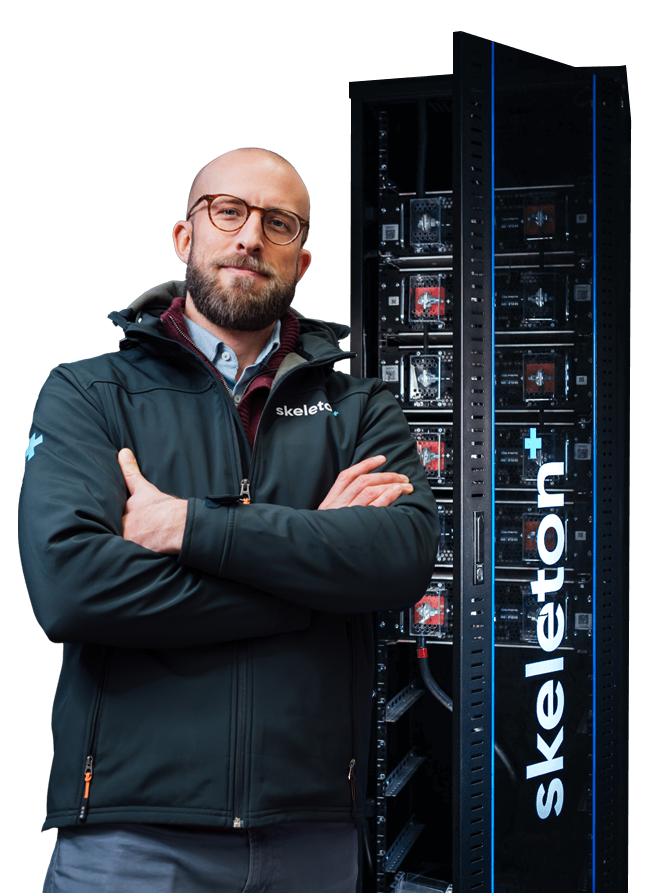

With growing energy demands, the need for smarter energy storage solutions is becoming increasingly critical to ensure reliable and stable power for data centers. One solution gaining significant traction in recent years is peak shaving, a strategy that optimizes energy consumption, reduces utility costs, and alleviates strain on the power grid during peak demand periods.
Did you know that during peak demand spikes, we risk power outages, face higher energy costs, and contribute to a larger carbon footprint? The rise of AI has driven a significant increase in energy consumption, while the industry simultaneously strives to address climate change. It has led to the situation that the biggest challenge facing data center companies right now is implementing an effective peak shaving strategy using cost-efficient energy storage solutions.
Supercapacitors, also known as ultracapacitors, provide a reliable and stable solution for implementing peak shaving strategies at the rack level, PDU level, and UPS room level. After reading this article, you'll have a clearer understanding of how supercapacitors function in data center operations and how your company can use them to save costs during peak demand.
Understanding Peak Shaving
Peak shaving, also referred to as peak-load shaving, is a demand-side management strategy aimed at reducing the maximum electricity consumption of a facility during peak periods. In practice, it involves cutting energy use when demand and costs are highest—such as on a hot summer day when air conditioning usage surges.Peak shaving is necessary to reduce energy costs and prevent data center overload.
For instance, a data center might rely on a backup power during peak hours to avoid higher utility rates, saving costs and reducing pressure on the energy system. During these periods, the power grid is often under significant strain, leading to inefficiencies, increased operational expenses, and the potential risk of blackouts or brownouts. Peak shaving mitigates these risks by actively managing and reducing electricity consumption during high-demand periods, ultimately flattening the demand curve and improving data center stability.
How Do Supercapacitors Ensure Stable Power For Data Centers During Peak Demand?
With AI’s growing energy needs, supercapacitors provide rapid energy storage and discharge capabilities, ensuring stable power during peak loads or short outages.
Here's how:
-
Instant Power Delivery: Supercapacitors can quickly release stored energy during peak demand periods, preventing the need to draw extra power from the grid. This helps stabilize the energy supply when demand spikes.
-
Smoothing Power Fluctuations: Supercapacitors effectively smooth out short-term power surges caused by fluctuating workloads, such as those from AI and machine learning processes (ML), ensuring consistent energy flow without overloading the system.
-
Peak Shaving: By discharging energy during peak times, supercapacitors help reduce the overall energy drawn from the grid, lowering demand charges and preventing grid strain.
-
High Efficiency and Long Lifespan: Supercapacitors have high charge-discharge efficiency and can last over 20+ years, providing a reliable, low-maintenance solution to handle peak energy demands.
-
Reduced Need for Backup Generators: During brief power interruptions or spikes, supercapacitors can supply immediate power, reducing the reliance on battery-powered backup generators, which are slower to activate and less efficient.
How Supercapacitors Work in Data Centers?
The power architecture of data centers is already designed to achieve high levels of reliability, capillarity, and efficiency. Power distribution resembles a structured network of roots, originating as thick channels from the tree's trunk and branching into increasingly finer channels to reach every corner of the soil. Similarly, in a data center, the cabling system and power distribution units (PDUs) serve a comparable function. However, while a tree's roots gather water and deliver it to the main plant, in a data center, power flows from the grid connection point to the myriad transistors across all processors in the building. Each of these transistors operates on an extremely low current at very low voltage.
Supercapacitors help stabilize this system by handling high-frequency power demands caused by GPU workloads. By integrating supercapacitors, data centers can enhance power efficiency and support sustainable operations while meeting the high fluctuation power demand of AI and ML workloads.
Multiple Ways to Incorporate Supercapacitors in Data Center Operations:
Power fluctuations can cause problems at low voltage levels, affecting various devices even before they reach the main power source. To effectively resolve these issues, it’s best to address the source of the fluctuations—right at the GPUs and other processing units within the racks.
To tackle this, we are developing supercapacitor modules that fit within just 2 rack units (RUs) or less. These modules are designed to be highly efficient, generate minimal heat, and take up little space. A single supercapacitor module can manage power fluctuations of an entire rack, which can range from 20 to 50 kW, and operates at voltages between 50 to 200V DC.
When we look at the aisle level, we can find effective solutions to manage power fluctuations. One option is to enhance the Power Distribution Unit (PDU) by adding a supercapacitor-based peak shaving unit. This can help handle power spikes from 30 or more racks, which can often exceed 1 MW.
Next, we arrive at the UPS room, which is an ideal spot for integrating energy storage devices. By combining supercapacitors for peak shaving with existing Lead-Acid batteries and power converters, we can achieve significant benefits, such as reducing costs and simplifying the system by consolidating similar hardware. These supercapacitor units can easily work with the UPS's current DC or AC bus.





